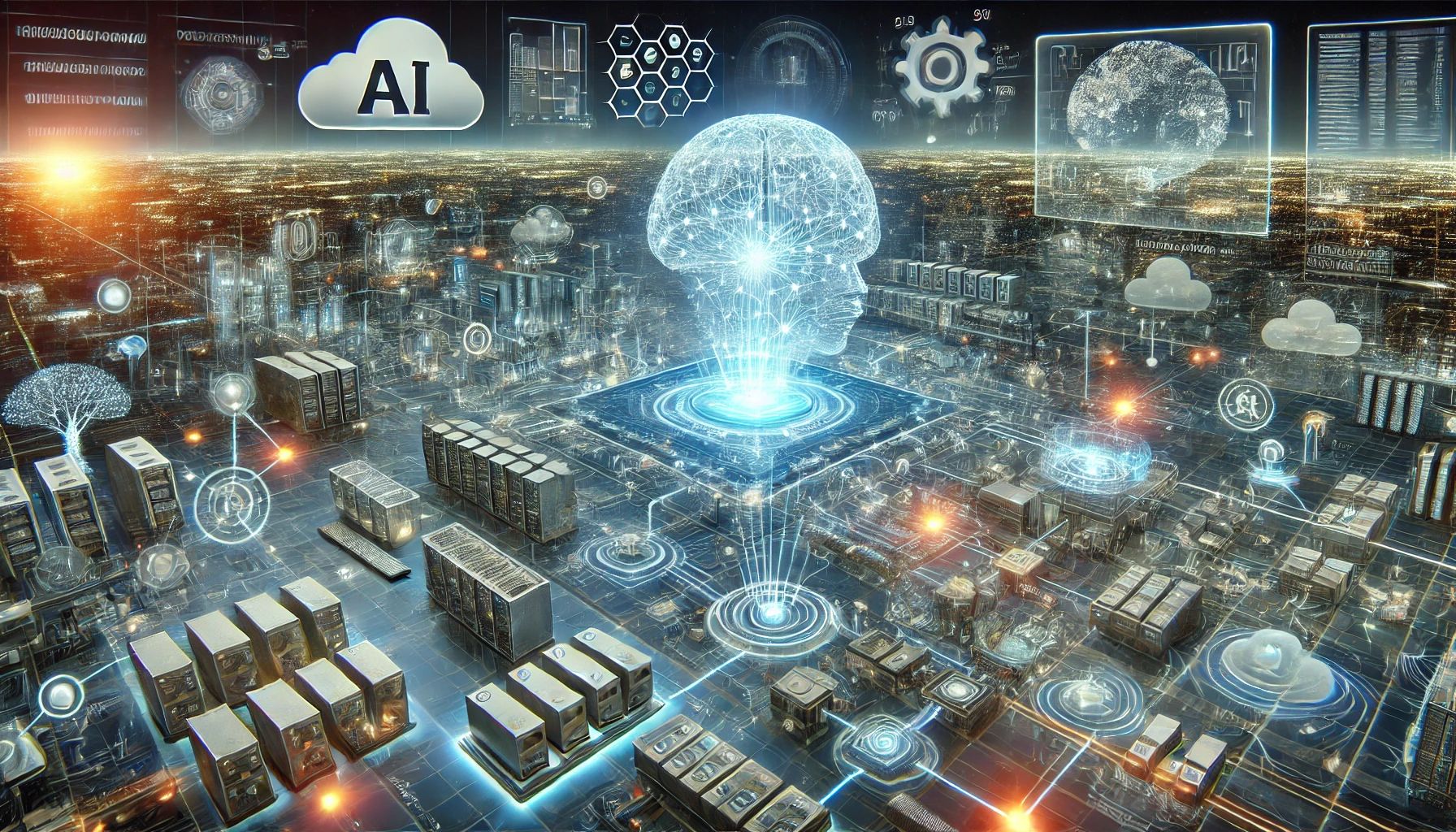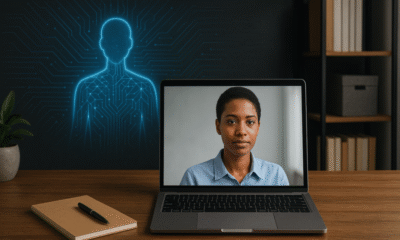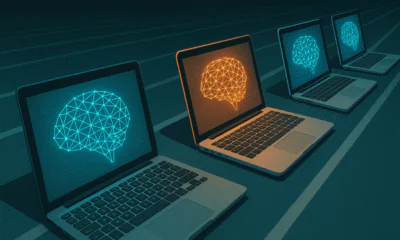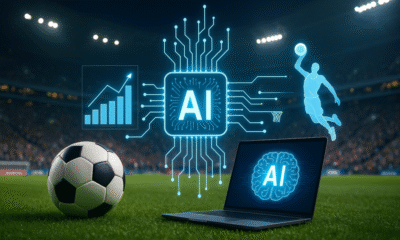Thought Leaders
5 Networking Tasks that AI Can Help NetOps With, And 5 It Can’t

Today’s digital landscapes are evolving rapidly as the complexity and scale of network infrastructure continues to grow exponentially. This surge is making it more challenging than ever to manage networks efficiently. While there are a variety of tools designed to help NetOps teams, Gartner claims that two-thirds of network tasks are still manual. As a result, there is a continued demand to streamline network operations and management.
Furthermore, the adoption of cloud computing and virtualization technologies combined with new technologies and services means organizations need more flexible and scalable network management technologies that can help with the increasing volume of network traffic and devices. While scripting has long been a way to automate individual engineering tasks, it is not scalable across an entire operations team.
Enter AI and more specifically, the promise of generative AI, which over the last two years has been a catalyst for the market. But with so many AI-enabled technologies now hitting the networking space, it can be hard to understand what functionality is real and what’s AI whitewashing. Let’s look at 5 networking tasks AI can help NetOps teams with today, and 5 areas it can’t (but might in the future?):
Helps NetOps Teams:
1. Infrastructure Discovery and Configuration Analysis – It’s standard operating procedure to identify and catalog all the physical and virtual components that make up an organization's IT infrastructure, and to examine the settings, configurations, and states of the components within that infrastructure. This is an ongoing process that can take hours per week when performed manually. But AI, utilizing a full Digital Twin of a network, dramatically accelerates this process (for example BGP tunnel down can be reduced from 2 hours to 10 minutes) pulling up any vital information a NetOps team might need on device hardware or software, configurations, resources, performance, and security risk assessments.
2. Dynamic Mapping – NetOps teams use dynamic mapping for network visualizations, network monitoring, troubleshooting and much more. It automatically discovers, documents, and updates the relationships, paths, and connections between various network devices and components. AI (again with a full Digital Twin of the network) can dynamically draw and map network topology relevant to a query or network issue in minutes, whenever they are needed. Without AI, network engineers must spend a few hours per site drawing the maps in Visio (which can add up to hundreds of hours to fully map an enterprise network) and the maps will go out of date in weeks or even days.
3. Root Cause Analysis and Anomaly Detection – Every networking professional knows how important root cause analysis and anomaly detection are. They ensure the stability, security, and efficiency of systems and processes. Typically, this requires the intuitive expertise of IT professionals with years of experience (using CLI tools, Ansible, Python, etc.). Until AI, there were no shortcuts to gaining this troubleshooting knowledge. AI, trained by subject-matter experts, can suggest diagnosis or assessment logic to use in network automation similar to how AI already helps programmers generate code. AI might soon also be able to help reliably replicate, adapt, and scale automation for every device on the network.
4. Recommended Actions – Much like troubleshooting, remediating an issue (restoring service degradations to the desired baseline) often requires expert skill. This involves researching vendor documentation and gaining knowledge of best practices and personal experience. AI can catalog decades of experience and better distribute tribal knowledge on novel issues to engineers of every level. Once a diagnosis is made and accepted, or unwanted trends are identified, AI can recommend corrective actions, next steps, follow-up procedures or change proposals.
5. Dashboards and Reporting – Real-time observability, actionable insights, and the ability to make informed decisions quickly are all part of the NetOps job description. Automation can greatly streamline these processes, but how are the automation results presented to human decision-makers? Visualizing useful analytics has become its own industry with dozens of graphing and dashboard platforms. But these still require careful consideration and hours or days of work to build. AI can significantly ease the visualization of observability and automation results by assisting in the creation of custom dashboards and reports tailored to specific use cases for tracking, monitoring and collaboration. Imagine having to peruse through thousands of network insights gathered from telemetry and automated analysis and then imagine an AI assistant transforming that data into a glanceable visual dashboard that highlights urgent issues and priority tasks.
Doesn’t Help NetOps Teams:
1. Approve Network Changes – NetOps wants to minimize the risk of downtime, ensure compliance, help maintain security, and overall align with business objectives, which is why approving network changes is such a crucial function. While AI can suggest recommended actions, it cannot make a judgment call to approve or finalize network changes. These changes are complex, every enterprise network is different, and a mistake can cost tens of thousands of dollars in downtime. AI hasn’t demonstrated enough advanced networking knowledge for executives to trust it with such an important task.
2. Design Complex Networks – Every network and its requirements are unique. AI could potentially one day design simple networks for rudimentary use cases, but enterprise networks are too complex and tailor-made to their specific use cases. A micro trading company might require an ultra-low latency network. A video content delivery company might require high bandwidth. A healthcare company might require high availability. Not to mention the various protocols that might best suit each enterprise, from traditional IP, to multicast, MPLS and SD-WAN. AI cannot calculate every possible iteration of a network and choose the best design. Only a human can make those considerations and decisions.
3. Make Choices – NetOps pros constantly have to make daily critical decisions around traffic management, performance optimization, respond to alerts and incidents, approve network changes and more. AI can certainly provide information to these decision-makers, but it cannot understand the context enough to weigh tradeoffs, make tough decisions, or choose compromises. Would you want AI making a decision that might affect network service delivery of a hospital or government agency?
4. Take Accountability – NetOps teams are judged based on uptime, availability, network performance, problem management, compliance adherence and more. With AI thrown into the mix how are teams measured? Do we think “it was the AI’s fault” will be an acceptable response? AI will never placate key stakeholders or customers.
5. Innovate – Improved efficiency, better performance, increased scalability, better user experience…all of these things require innovation. Humans have the ability to understand the complexity of today’s networks, combine that with the business objectives of an organization and functions of their role to come up with unique ideas and solutions. AI doesn’t have the capacity to mutate ideas and create something new. It cannot think outside the box and provide innovative network solutions for enterprise challenges.
There’s no doubt that AI is a powerful tool that is being heavily integrated across the technology stack. It can offer valuable support to NetOps teams by enhancing visibility, automating tasks, and more. But there’s also a lot it can’t do, and probably never will be able to do. We’re just at the beginning of this symbiotic relationship. What’s the killer AI feature you’d like to see in NetOps?












